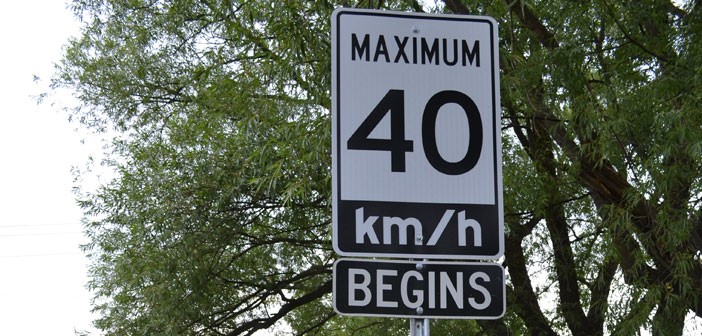St. Catharines council okays drop to 40 km/h limit in residential areas
Published September 23, 2022 at 4:13 pm

Even though this was being discussed by council as far back as March, St. Catharines has finally gone ahead with dropping the speed limits in residential areas from 50 km/h to 40 km/h.
While no one opposed the move in March, the problem was timing. Working off the city’s own findings from their Traffic Calming Policy in 2014, it is estimated that roughly 1,300 signs have to be changed at a cost of around $260,000.
That’s a significant number of signs – so much so that city staff can’t do it quickly enough. As it is, it will take a year to convert all the existing signs.
Thus the March report, penned by Transportation Technologist Steve Bittner said “the scope of the work is substantial, so implementing the required signs on every community street within a reasonable timeframe cannot be achieved using our current staffing compliment for sign installations. As such, staff would look to retain a contractor to undertake this work.”
As well, with the project costing $260,000, city staff realized that there was only $10,000 set aside in this year’s budget for “traffic calming” solutions and had to ask that the balance ($250,000) be inserted into the 2023 operating budget.
Two other traffic calming solutions were ruled out by staff, who leaned towards dropping the speed limits over increased stop signs (disrupts the flow of traffic) and speed bumps (slowing then speeding up only to slow again increases exhaust emissions).
While the new limit won’t apply to main or arterial roads, every residential neighbourhood in St. Catharines will be affected after the speed dropping transition.
Due to the shortfall of cash in the 2022 budget, the city tried to get the province to pick up the tab, by changing the Highway Traffic Act in reducing speed limits on local roads but the Ontario government turned thumbs-down.
